Troubleshooting Action Recorder. Problem Steps Recorder Using the Program
Problem Steps Recorder. When launched, the utility records every user action and documents the entire process in the form of screenshots and step-by-step descriptions. After stopping the recording, the program saves the information received as a compiled HTML file and packs it into a ZIP archive that can be sent by mail to a technician.
In this article, I will explain how to use this tool.
Launching Activity Recorder
The Activity Recorder can be launched from the Troubleshooting section of the Control Panel, or you can simply type “psr” (without the quotes) in the Start menu search bar and click. The utility's user interface is very simple and straightforward (Figure A).
Figure A. The Activity Recorder has a simple and straightforward interface.
Action recording
To start recording, just click the Start Record button. In this case, a blinking "Recording ..." message will appear in the title bar, and a flashing red square will appear on the application icon in the taskbar. After that, you can start performing the operations that you want to document.
For example, I opened the Control Panel and launched the Power Options utility. Meanwhile, in the Recorder window (Figure B), the Start Recording button has been replaced by the Pause Record button, the Stop Record and Add Comment buttons become active, and there was also a time counter.

Figure B. After recording starts, the set of buttons in the utility window changes.
There is an icon next to the counter. Clicking on it will bring up a User Account Control dialog box asking you to elevate the user rights. This allows you to run the utility as an administrator to record actions in programs that are also run with administrator rights. In other words, the recording will run in the background even when interacting with the UAC windows.
Let's go back to my example. I clicked the Add Comment button, which allowed me to highlight a specific area of the screen and enter a comment in a dedicated window (Figure C).

Figure C. Using the "Add comment" button, you can select a problem area and accompany it with additional information.
After closing the Power Options utility window, I clicked the Stop Recording button. The Save As dialog box (Figure D) appeared, prompting you to enter a file name, after which the file was saved in ZIP format.

Figure D. Information obtained during the recording session is automatically saved in ZIP format.
The ZIP archive contains a compiled HTML file, as shown in Fig. E.

Figure E. The ZIP archive contains a compiled HTML file that can be run by double clicking.
Double-clicking the file will open an Internet Explorer window that displays a step-by-step report of the actions taken during the recording, accompanied by screen shots (Figure F).
The Activity Recorder is another tool on the path to fixing errors that allows the user to record a Windows problem in a special file, in which all his steps, presumably leading to the error, will be recorded.
Hello everyone, today we are considering a toolkit that is rarely used by Windows users, to which little attention is paid in various forums to resolve problems and errors in this OS family. But in vain. This method has a number of advantages and, of course, a flaw.
MINUSES
- action recorder is not a recording from your computer / laptop screen
- full screen programs, such as games, may not display correctly
- recording is done in a file of the format .mht; in Windows, by default, only one program can handle this correctly (with pictures and clickable links) - Internet Explorer(other browsers still do this neither shaky nor badly: either through the activation of beta extensions like in Chrome, or through plugins in Firefox, and even that is not a fact).
PROS
- the text entered by the user is not displayed (you can enter passwords); it is better to be more careful with the keyboard shortcuts - because of them, the contents of the buffer may appear on the screen
- for each mouse click, the recorder automatically adds a recorded action item with a SYSTEM explanation of what the user has done
- analysis of what is happening, in parallel with; if an error occurs, both the Journal and the Tool will record it
- if the user is going to share a problem, at any time he can provide what is happening with a comment in any form; it will be added automatically in the same file
- saved file automatically “ zip-committed ”into a file with a selectable name, which immediately makes it ready for transmission over the network
- ... and the file sizes are rather small - after all, not a multimedia file, which in itself is comfortable for sending and receiving a file
How do I record the Windows problem or where is the recorder located?
What makes the tool good - you don't need any special skills. It is not self-sufficient, but in any case it is worthy of being sent along with other independent bug reports to fellow forum members, technical support specialists, network administrators, etc. Requirements for working with the Tool are minimal:
- Windows starting with 7 -th model
- the ability to boot into the OS graphical interface
It starts easily - write the command in the search bar
or directly by the phrase:
recording medium
The result will be the same:
You will have to work with a small, player-like screen:

By clicking Start recording the process will begin. Highlight the area you need to pay attention to (or don't highlight), add comments:

After everything happens, and the error gets to the record, you can save:

check the contents of the report before sending
File in archive zip ready to be mailed. It will contain information on:
- operating system assembly
- all clicks on the mouse buttons, accompanying what is happening with pictures from the screen
- ... and started processes with user interface elements
Now specialists will have more idea about your problem than after an oral description.
The range of use of the Problems Steps Recorder is very wide, the first thing that came to mind: some tracking, sending history to support services, reminders. This utility allows you to automatically record user actions in the form of snapshots with parallel recording of actions. The utility interface is all intuitive. To quickly run the utility: click win + r and in the window enter the command psr.exe.
To start recording, press Alt + A, to stop recording actions, press Alt + O, or press the corresponding button.
You can also add comments along the way, to add a comment press Alt + C, the back area will darken and the comment window will be active.  After stopping recording, the utility will prompt you to specify the location to save the archive with a listing of actions and full snapshots.
After stopping recording, the utility will prompt you to specify the location to save the archive with a listing of actions and full snapshots.  The final recording file will be saved in mht format, which can be viewed using any browser. The final file is pre-zipped, so you need to unzip it first).
The final recording file will be saved in mht format, which can be viewed using any browser. The final file is pre-zipped, so you need to unzip it first). 
 In the so-called report file, after the snapshots there is a line-by-line description of the actions.
In the so-called report file, after the snapshots there is a line-by-line description of the actions.  The program has "Options" settings:
The program has "Options" settings:  In the parameters, you can specify: Output location, enable or disable snapshots, specify the number of snapshots (max 100).
In the parameters, you can specify: Output location, enable or disable snapshots, specify the number of snapshots (max 100). 
When running the Windows Activity Recording Utility (psr.exe) from the command line, the syntax looks like this:
psr.exe
In the console, psr.exe has many more features than in graphical mode.
Description of additional parameters:
/ start - start recording;
/ stop - stop recording;
/ output - path to the file with recording results. Required parameter !;
/ sc - indicates whether screenshots should be taken (0 - no screenshots, 1 - screenshots are taken). If the parameter is not specified, then snapshots are created;
/ maxsc - maximum number of snapshots (minimum 0, maximum 100);
/ maxlogsize - the maximum size of the mht file (in MB) before archiving;
/ gui - whether or not to show a graphical shell (0 - no GUI, 1 - with GUI). By default, the GUI is displayed;
/ arcetl - include the ETL file in the archive (0 - do not include, 1 - include);
/ arcxml - include the XML file in the archive (0 - do not include, 1 - include);
/ arcmht - include a file in MHT format in the archive (0 - do not include, 1 - include). By default, the mht file is included in the archive;
/ recordpid - record of actions associated with the specified PID;
/ sketch - create a sketch of the screen, if snapshot creation is disabled (0 - do not create, 1 - create);
/ slides - create slideshows from HTML (0 - don't create, 1 - create). Disabled by default;
/ stopevent - create a system event after creating a file.
Usage example:
psr.exe / start / output C: \ 777 \ rec1.zip / gui 0 / sc 1
psr.exe / stop
Hello everyone! Recording from the monitor screen using windows 7, if you are not a blogger, it is rarely needed, but still it happens…. Therefore, today there is a new entry on the blog for novice computer and Internet users. How it is possible to do it by means operating system windows 7.
With this article we will continue our acquaintance with "Chips" operating system windows 7. As you remember, last time in the role of a "chip" was the option "Notes", embedded in the OS, or. And what I will tell you about now, probably only system administrators know, and now you.
Recording the action from the monitor screen
So, starting my story, I want to warn you right away that it will not be about. There are a great many of them on the Internet, and therefore everyone who came to my site for this information can simply download such a program. To do this, copy and enter into the address bar:
https://yadi.sk/d/9AryWuAaKgFmj
And those who need advice on identifying computer failures, or explaining incomprehensible actions for him, taking place with his beloved "hardware", got there. This utility is designed for just such a case, because it records everything that happens on the monitor screen, in the form of photographs, or so-called screenshots. At the same time, it automatically makes a record of your actions on the computer, in the form of explanations for the photograph.
As you understood, this action record, can be carried out in order not to forget the sequence of certain steps performed when setting up any programs or working with them.
For that. to take advantage of this opportunity, follow the path: START—> FIND PROGRAMS AND FILES—> PSR.EXE—> ENTER.

I advise you to immediately hover the cursor over the installation psr.exe file, and by pressing the RMB (right mouse button) select the item-
SEND ON AND CREATE LABEL. So, this windows 7 option will always be at your fingertips.
By opening and activating the utility, you will get this picture.
The program is controlled by almost two buttons: START RECORDING and STOP RECORDING... After that the file will be saved in the form of a ZIP archive on your computer. You can open it if you have not forgotten to install the utility software on your computer.
To do this, you need to double-click the LMB on the archive, and after opening it, click on the file itself. And thus recording from the monitor screen using windows 7 will open and read by you.
By the way, if you forgot to replenish your knowledge base, you can do it right now by clicking on the link.
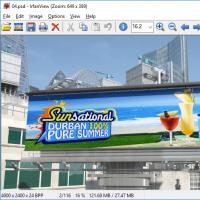 The best programs for reading and editing: do without Photoshop psd extension than open
The best programs for reading and editing: do without Photoshop psd extension than open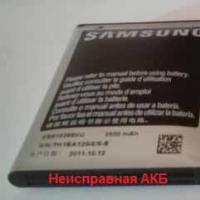 Why is my phone charging slowly?
Why is my phone charging slowly?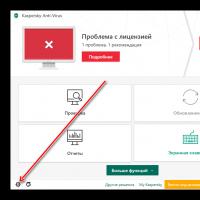 How to add a folder to an exception in Kaspersky How to add exceptions to a program in Kaspersky
How to add a folder to an exception in Kaspersky How to add exceptions to a program in Kaspersky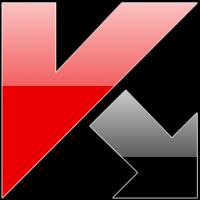 Installing Kaspersky Security Center Installing the Administration Server kaspersky security center 10
Installing Kaspersky Security Center Installing the Administration Server kaspersky security center 10 How to take a screenshot on a computer: All possible ways How to take a screenshot of a photo
How to take a screenshot on a computer: All possible ways How to take a screenshot of a photo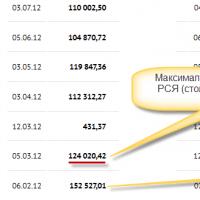 Screenshot - what is it and how to make a screen Ways to take a screenshot on a computer
Screenshot - what is it and how to make a screen Ways to take a screenshot on a computer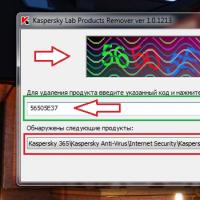 Free renewal of the Kaspersky Anti-Virus license Suspension of protection from Kaspersky Gadget
Free renewal of the Kaspersky Anti-Virus license Suspension of protection from Kaspersky Gadget